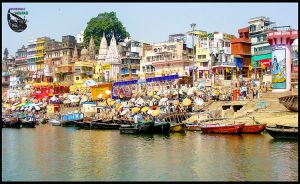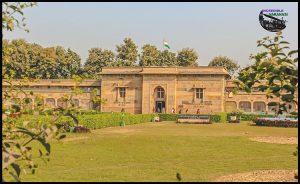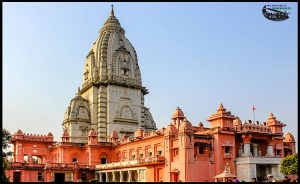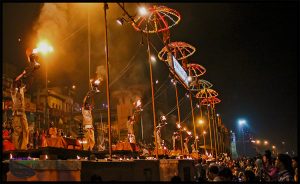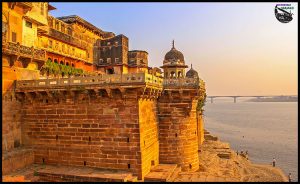Sarnath is situated in the outskirts of Varanasi. it’s a completely different world due to its historical,religious and cultural perspective. While Banaras is the centre of Hindu mythology and Lord Shiva is the chief deity, Sarnath is the home of another great religion, Buddhism. Sarnath was the place, where Buddhism saw the first light of the day. This place has a great significance in the history of ancient India. Sarnath is one of the four most important holy places associated with the life of Buddha(The other three being Lumbini in Nepal,Bodhgaya in Bihar and Kushinagar in Uttar Pradesh).Here in Sarnath, Lord Buddha gave his first sermon to his five disciples after getting enlightenment in Bodh Gaya. Buddhism took a formal shape in Sarnath and became a great learning experience worldwide.
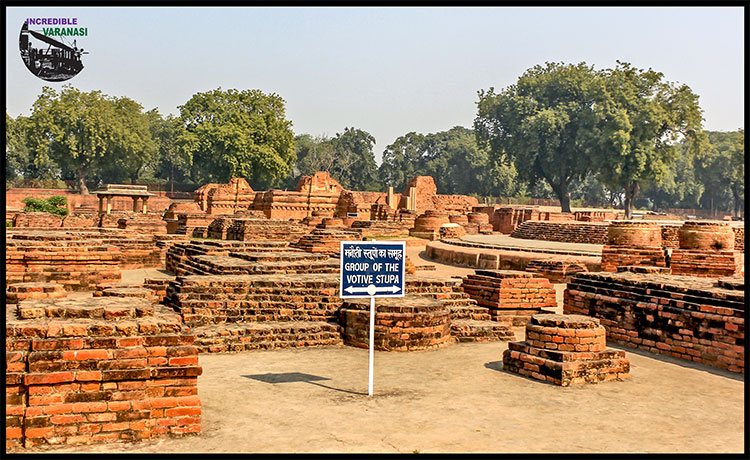
Today, Sarnath holds importance not only as a religious place for Buddhists but for the peoples of others religions as well. Sarnath is also sacred to the Jains due to the presence of a temple belonging to the Digambara sect,erected in 1824 A.D. in memory of their 11th Thirtankara, Lord Shreyas Nath. There also stands a temple of Sarangnath Mahadev about half a mile from the ancient remains of the deer park.
Excavation Sites of Sarnath: The excavation sites of Sarnath is comprised of some protected enclosures mainly containing an impressive collections of monasteries, stupas, temples, inscriptions, sculptures and other antiquites ranging in date from 3rd century B.C. to 12 century AD. These sites are maintained by ASI. The important attractions are:
Dharmarajika Stupa: Near the entrance of the excavation site, this flat circular base was once a large stupa. The circular base structure of the bricks are the only remnant of the lost glory. Ashoka The Great built thousands of stupa from the relics extracted from the seven main relics stupa. Dharamrajika Stupa is also a part of those thousand stupas built by Ashoka. This was a very small stupa originally, but later on other parts being added to its structure and it became a huge, grand structure of bricks.
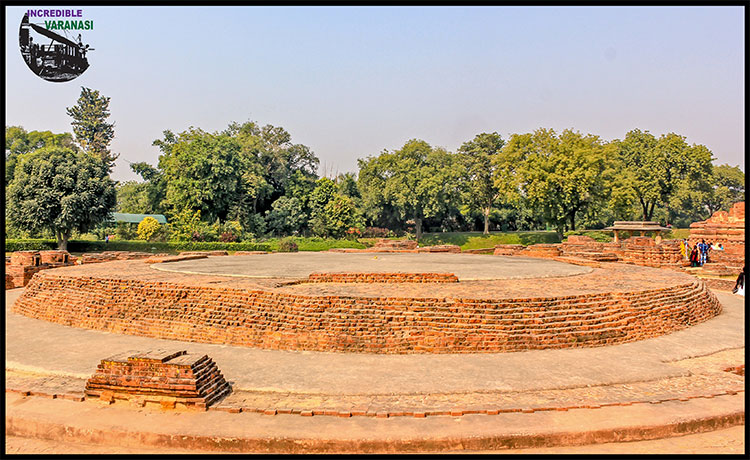
The grand structure stood tall even in its ruined state until 1794, when it was hammered down to its foundations by Babu Jagat Singh, Diwan of Raja Chet Singh of Banaras, for obtaining materials for the construction of a market in Banaras, now known as Jagatganj. During this ruthless dismantling of the Stupa, his workmen found a green marble relic-casket inside a sandstone box. The sandstone box was later recovered during the further excavations in Sarnath by Sir Alexender Cunningham in 1835, and is now in the The Indian Museum, Calcutta, however, the original relic-casket has disappeared somewhere.
Monolithic Railing: The simple looking structure is an impressive work of craftsmanship. This square railing was made of a single sandstone block from Chunar and perhaps it was placed on the top of Dharmarajika Stupa.
Ashoka Pillar: Ashoka Pillar is one of the most important structure at Sarnath. This pillar was crowned with a unique sculpture, known as the Lion Capital. The Ashoka Lion Capital of Sarnath comprises four lions, standing back to back, mounted on cylindrical abacus facing four directions.The abacus features the sculptures of an elephant, a horse, a bull, and a lion, separated by intervening 24 spoked Dharma Wheels over an inverted well shaped Lotus flower.
The ruined Pillar still stands in its original place, however, The Lion Capital and few pieces of wheels are now exhibited in the Archeological Museum of Sarnath as the national treasure.
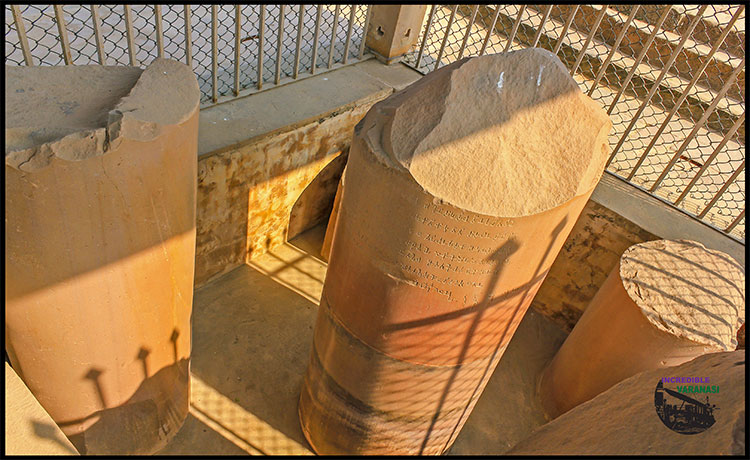
The Lion Capital of Ashoka has been adopted as the National Emblem of India and the wheel, Ashoka Chakra from its base was place onto the centre of India’s National Flag.
Main Shrine of Mulgandha Kuti: Few meters ahead of the Ashoka Pillar, stands a ruined temple, about 18 feet high, surrounded by a concrete pavement extending some 40 feet in every direction. The building, 60 feet along each side, is square in plan and faces to the east. It is believed as the original site of Mulgandha Kuti where Lord Buddha meditated and spent his first rainy season.
Courtyards and Monasteries: A lot of ruined structure are visible around the main shrine. Many of them are the ruins of the monasteries built for the dwelling of religious individuals who have retired from society in order to lead a disciplined life of celibacy with vows of poverty and asceticism to attain spiritual freedom.
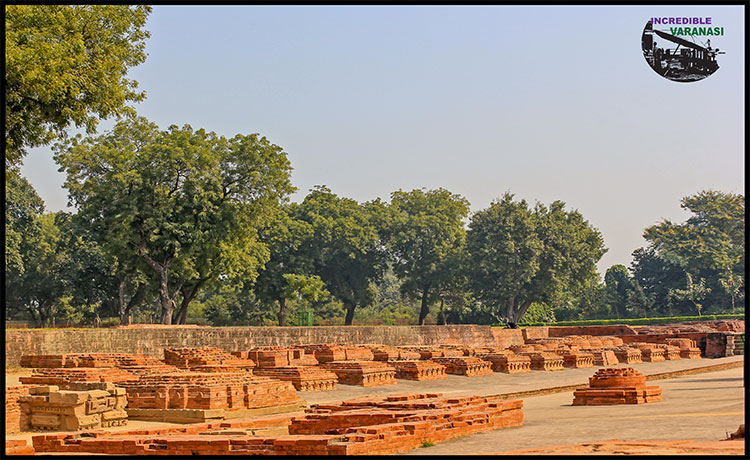
Dhamekh Stupa: The word Dhamekh is derived from Sanskrit dharamrekha and from Pali dhammekkha ‘The beholding of Dharma’ summed up in the first sermon preached by the Buddha at this place. The Dhamekh Stupa is a solid cylindrical tower, 93 feet in diameter at base and 143 feet in height including its foundations. The basement of the structure above the brick foundations is of stone work, while the upper part is of bricks. The stones in each layer were bonded together by means of the iron clamps.
Presumably the base of the Stupa dates back to the Ashokan period. Dhamekh Stupa was originally built in 249 BCE during the reign of King Ashoka of the Maurya Dynasty. It was rebulit in the 5th century and many additions and modifications have been carried out from time to time.
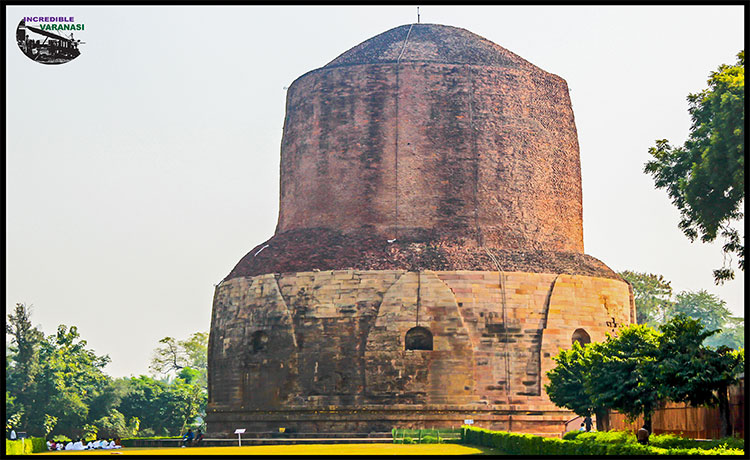
Other Ruins in Sarnath:
Chaukhandi Stupa: While going to Sarnath, this is the first structure that the visitors find to the left side of the road. It looks like an Octagonal brick tower on a small mud hill. The base of the hill is covered by the brick walls. The whole structure looks really beautiful during the sunset. It is believed that it was a memorial stupa perhaps erected on the spot where Lord Buddha on hisway to Mrigadava first met his five friends. (Whom he delivered the first sermon . The five people was called as Panchabhadravargiyas, i.e., the five of the blessed band). According to Hiuen Tsang, the height of the Stupa was 300 feet. The present height of the Stupa including the octagonal tower is 84 feet from the level of the ground.
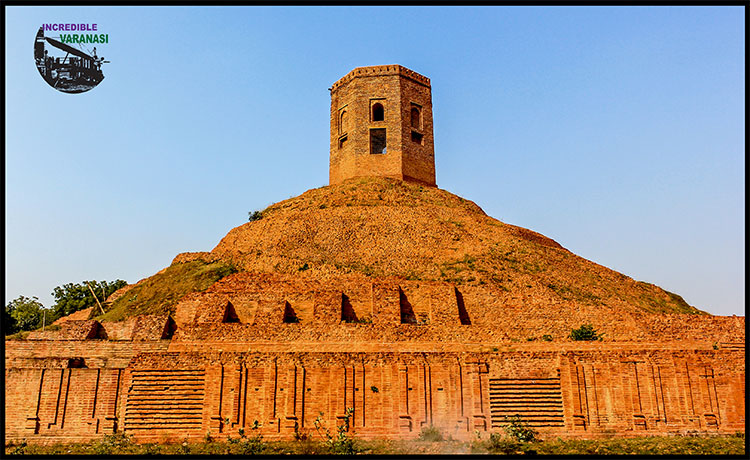
The octagonal tower surmounting the Stupa was constructed by Emperor Akbar to commemorate a visit paid by his father Humayun to that place. In 1836, Sir Alexander Cunningham drove a vertical shaft through its centre down to the foundation in search of a relic chamber, but his digging did not lead to any discovery.
Modern Development:
Jain Temple: Being the birthplace of Jain Tirthankar Lord Shreyans Nath, Sarnath is also a sacred centre of Jain Religion. Lord Shreyans Nath holds a very significant position in the Jain religious architecture. This Jain Temple is located to the south-west of the Dhamekh Stupa in Sarnath.
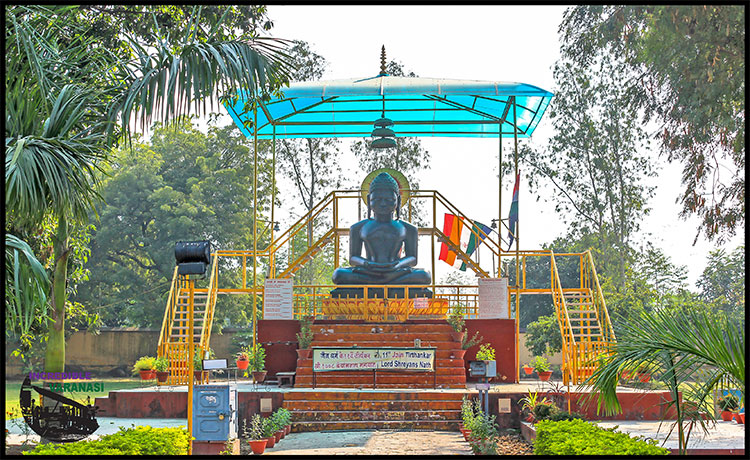
Mulagandha Kuti Vihara Temple: Mulagandha Kuti Vihara is a modern monastery and temple in the middle of a lush green garden. It is a striking Buddhist Architecture with the fascinating frescos on the interior wall. It was built by the Srilankan Mahabodhi Society in 1931 .There are beautiful frescos on the wall of this temple depicting the life of Buddha made by a Japanese artist Kosetsu Nosu, who was inspired by the frescoes of Ajanta.
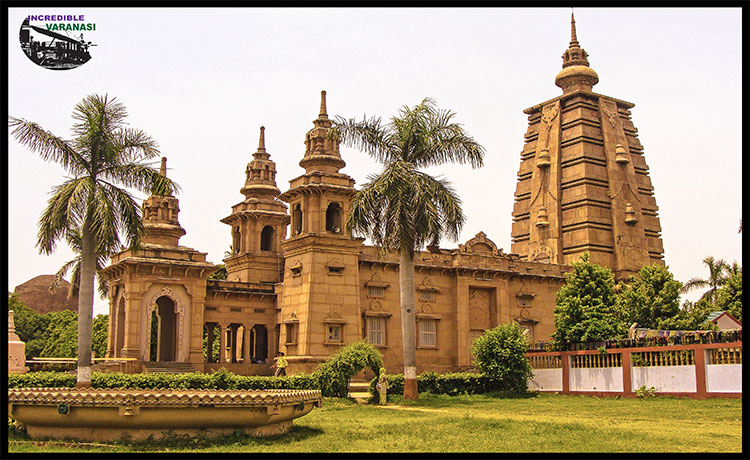
Bodhi Tree: The Bodhi Tree heads a very sacred position in the Buddhism. It is believed that Gautama Buddha had attained ‘Enlightenment’ in Bodh Gaya under a Pipal tree, which later, became known as Bodhi Tree. Fortunately, Sarnath is also blessed with one Bodhi Tree. The Bodhi Tree at Sarnath is considered as the descendant of the original tree like many other sacred trees in India and other countries that have been originally raised from seeds brought from the ancient Bodh Gaya tree. The present tree in Sarnath was planted in 1931 by Anagarika Dharmapala, founder of the Maha Bodhi Society of India, who brought a shoot of the Bodhi tree from Sri Lanka and planted it in Sarnath. The retaining wall around the Bodhi tree and the images of the Sakyamuni Buddha preaching his first sermon to the first five disciples were erected in 1989 with the help of the Buddhist devotees from Myanmar.
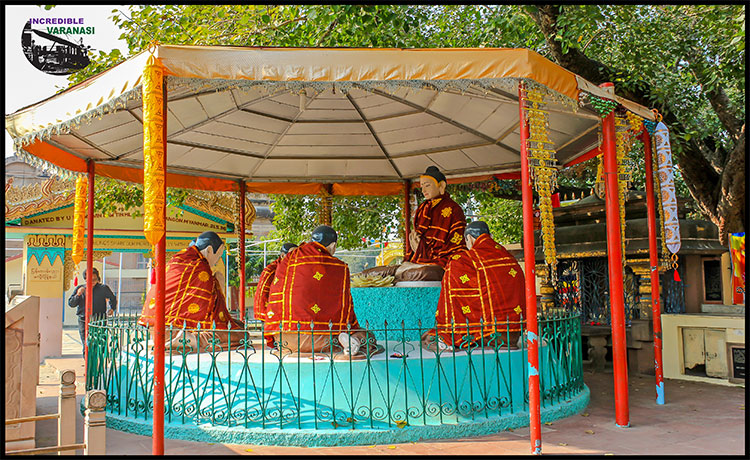
Other Important Temples:
Sarnath has a remarkable collection of Ancient Ruins and Modern Religious Sites. There are many notable modern buddhist temples situated around the sacred ruins. The temples are built as per the tradition and culture of the individual sponsor, but they all are designed the learn and understand the essence of Buddhism.The notable modern Buddhist temples in Sarnath are Japanese Temple, Burmese Temple, Chinese Temple and Wat Thai Temple. While Japanese temple has a typically Japanese aesthetics with a twin-storeyed pagoda having a sloping roof curving, the Wat Thai Temple has a huge Buddha Statue in a graceful standing posture.
They all have the images of Lord Buddha and also include five elements of Fire, Earth, Air, Water and Wisdom in their design, however, depending on the architectural traditions of its sponsors, the requirements of these five elements vary from one temple to another.
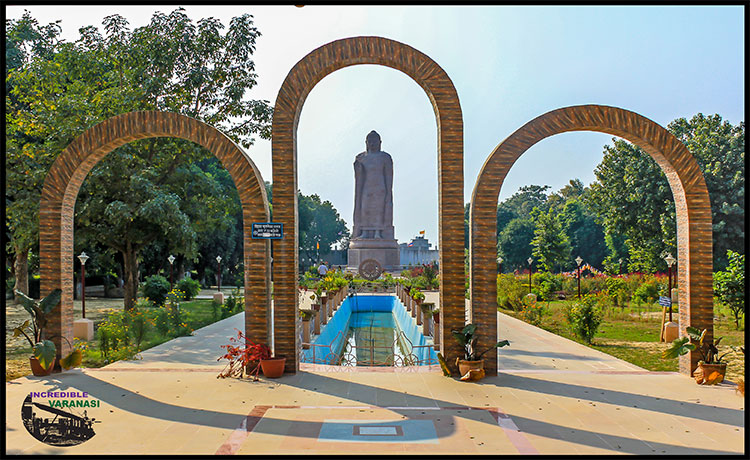
Archaeological Museum of Sarnath: Interestingly, the Archaeological Museum of Sarnath is also a remarkable historical structure. The construction of museum building began in 1904 and was completed in 1910. The whole building is made of sandstone with flat roof on the pattern of a Sangharam or a vihar. The museum exhibits the astonishing wealth of Buddhist history, finest specimens of Buddhist art, many sculptures and artifacts recovered from the site of Lord Buddha’s first sermon at deer park Mrigadava in Sarnath.
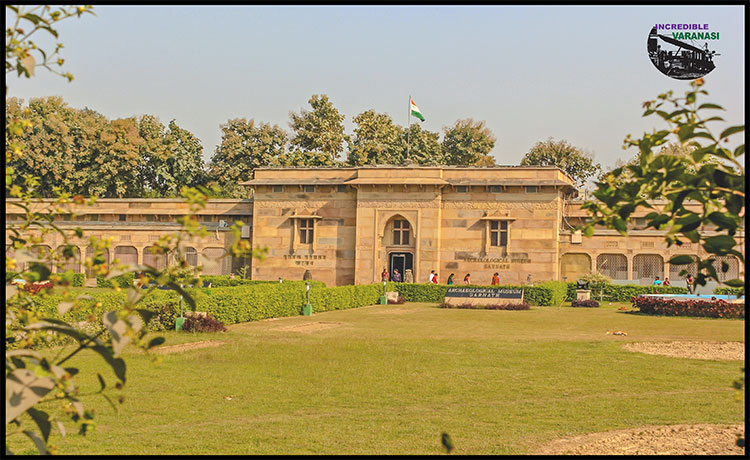
Sarnath is a vast open air museum of ancient Indian History. The ruins of Sarnath provide a great learning experience to its visitors. Being the most accessible among the important Ancient Buddhist sites, it equally fascinates the religious visitors and the history seekers.


